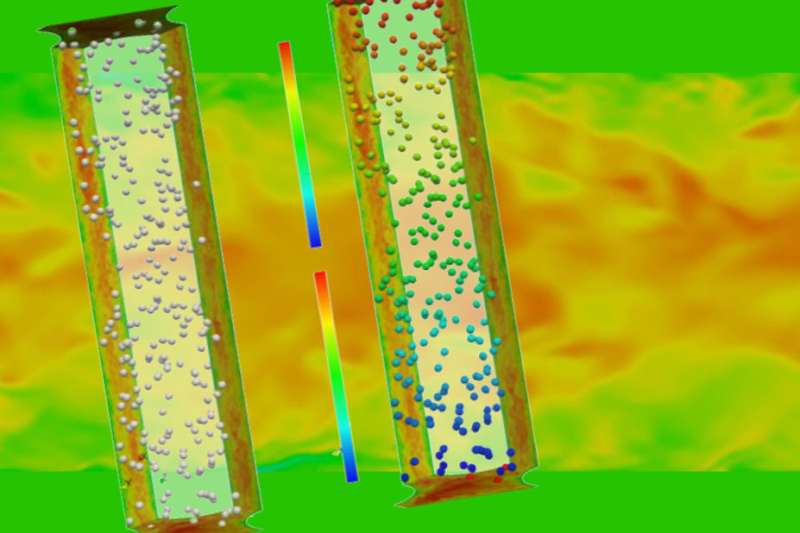Simulating turbulent bubbly flows in nuclear reactors

Inside nuclear reactors, boiling water, bubbles, and turbulent flows affect safety and efficiency. For many years, modeling turbulent bubbly flows was a challenging, time-consuming problem. Researchers were largely limited to experiments that yielded only a few bubbles at a time. Now, they can simulate the thousands of bubbles needed to model and predict the behavior of the flows in nuclear reactors. A team from North Carolina State University developed a novel bubble-tracking method. The supercomputer-based method produces a level of detail that cannot be observed directly in experiments.
With a fundamental understanding of the bubbly flows that occur in nuclear reactors, researchers can improve reactors' performance. Advanced modeling and simulation tools can help advance reactor safety and efficiency. Efforts like this are helping the nuclear industry adopt novel approaches in reactor analysis. Such analyses are crucial for successful reactor designs.
Researchers are shedding light on boiling phenomena, bubble formation, and turbulent liquid/gas flows in nuclear reactor geometries. Using ALCF supercomputers, they devised a way to conduct a direct numerical simulation of fully resolved deformable bubbles at unprecedented scale. The team's approach performs smaller simulations to obtain statistically steady-state conditions and extract physically based numerical data for the development of coarser scale models. DOE's Consortium for Advanced Simulation of Light Water Reactors used the results from the detailed simulations to develop a new generation of boiling models to be included in an advanced virtual reactor multiphysics model. Additionally, the simulations produced detailed distributions of bubble concentration and estimated the variation of the forces acting on the bubbles, providing insights to advance the understanding of turbulent two-phase flows.
Large-scale runs of the new approach demonstrated the new bubble tracking approach, as well as the data processing and collecting techniques at scale for future simulations. The team's method, detailed in a paper published in Nuclear Engineering and Design, can collect detailed two-phase flow information at the individual bubble level. This advanced analytical framework will help researchers gain insights from the "big data" produced by the large-scale simulations.
More information: Jun Fang et al. Bubble tracking analysis of PWR two-phase flow simulations based on the level set method, Nuclear Engineering and Design (2017). DOI: 10.1016/j.nucengdes.2017.07.034
Provided by US Department of Energy



















